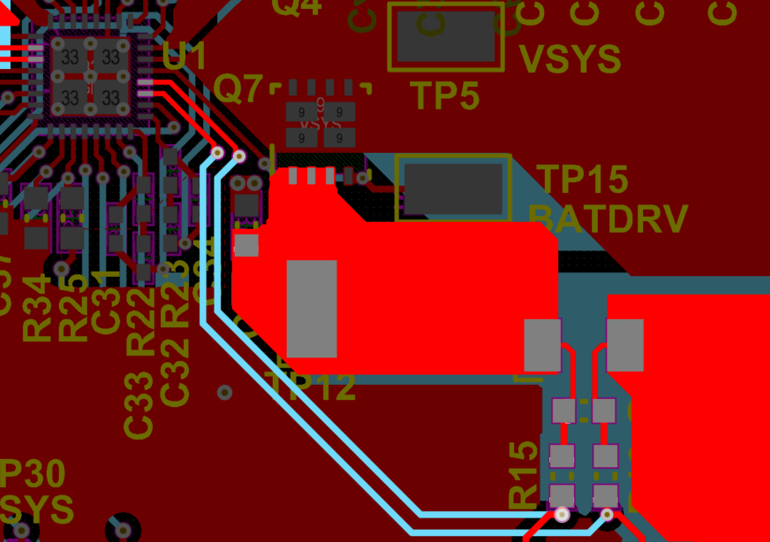SLUAAU1 January 2024 BQ25700A , BQ25708 , BQ25710 , BQ25713 , BQ25720 , BQ25723 , BQ25730 , BQ25731
- 1
- Abstract
- Trademarks
- 1Introduction
-
2Layout Guidelines
- 2.1 PCB Stack-Up (4 Layers)
- 2.2 Identifying Critical Circuit Paths
- 2.3 Input and Output Loop Placements Considering Noise, Efficiency, and Thermal Performance
- 2.4 Kelvin Sensing Circuit for Current Sense to Achieve High Accuracy
- 2.5 Small Capacitors Placements Considering Noise
- 2.6 Separating AGND and PGND
- 3References
2.4 Kelvin Sensing Circuit for Current Sense to Achieve High Accuracy
Use Kelvin-sensing connections for RAC and RSR current sense resistors. Figure 2-5 shows an example of Kelvin-sensing technique for RSR resistor. Put enough copper on high current path going through sensing resistor since the thin trace can cause an unexpected voltage drop on the board. Also keep in mind that non-kelvin connection can cause the different voltage across SRP and SRN compared to the voltage across sensing resistor. So, connect the current sense traces to the center of the pads and run current sense traces as differential pairs. To avoid noise getting picked up, put signal lines far away from noisy paths into inner layers.
 Figure 2-5 Kelvin Sensing Connections for
RSR Resistor
Figure 2-5 Kelvin Sensing Connections for
RSR Resistor